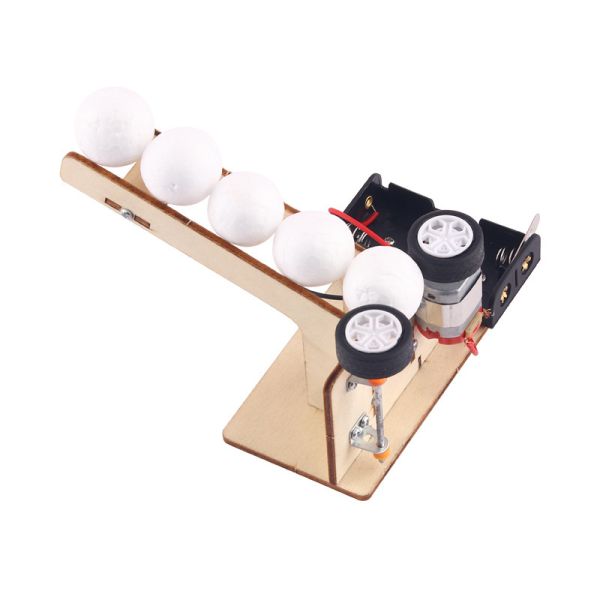All Categories
Pitching Machine Kit - Cat# 80-50-W033
In stock
SKU
80-50-W033
CA$9.05
- Buy 2 for CA$8.30 each and save 8%
- Buy 6 for CA$7.55 each and save 17%
Launch Learning! The Pitching Machine STEM Kit
Let your students build, experiment, and launch — all while exploring core STEM principles.
What’s in the Kit & How It Works
A chassis and mounting parts to assemble the pitching frame
A DC motor with coupling to spin a launch wheel
Wiring and connectors to power the motor
Four foam balls for safe projectile launching
Teacher’s resource guide with lesson ideas and background material
When assembled, the fast-spinning wheel (driven by the DC motor) propels the foam balls forward, converting electrical energy into kinetic energy and motion.
STEM Concepts at Play
As students build and test this kit, they’ll engage with:
| STEM Area | Key Concepts | Classroom Possibilities |
|---|---|---|
Electricity & Circuits | Series and parallel wiring, voltage/current relationships, motor characteristics | Students will wire the motor, test how voltage or resistance changes affect speed |
Energy Conversion | Chemical → Electrical → Mechanical → Kinetic | Compare input electrical energy vs. projectile energy and inefficiencies |
Forces & Motion | Newton’s laws, acceleration, friction, torque | Students can vary wheel size, surface texture, launch angle, or ball mass to examine effects |
Engineering Design & Iteration | Structure stability, alignment, material choices | Encourage redesigns to improve consistency, accuracy, or launch speed |
Measurement & Data Analysis | Distance, time, averages, graphing, error analysis | Students can record multiple launches, graph performance vs. voltage or angle, analyze variability |
Why Teachers Love It
Affordable, hands-on learning tool — ideal for individual or small-group builds
Scalable complexity — for younger students you can guide the wiring, for older students let them experiment
Cross-curricular integration — ties into physics, math, technology, and inquiry skills
Supportive resources — the kit includes a teacher’s guide (see the “Additional Resources”) to support lesson planning Kidder
Classroom Activity Ideas
Speed & Accuracy Challenge: Have student teams attempt to hit a target, measuring which launch parameters (voltage, wheel diameter, angle) produce best results
Optimization Sprint: Give teams fixed time to test modifications (e.g. changing motor voltage, adding fins, trimming weight) to improve performance
Data Lab: Students record dozens of launches, chart distance vs. voltage or vs. angle, calculate averages, analyze outliers
Design Extension: Encourage students to adapt the kit into a ping-pong launcher, catapult hybrid, or even build an “automatic pitcher” system





